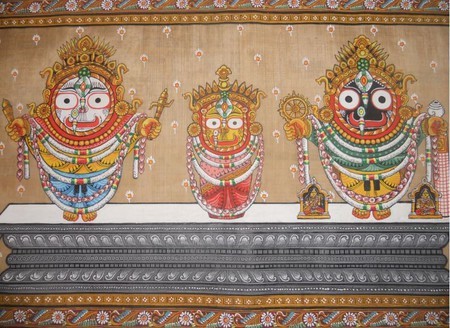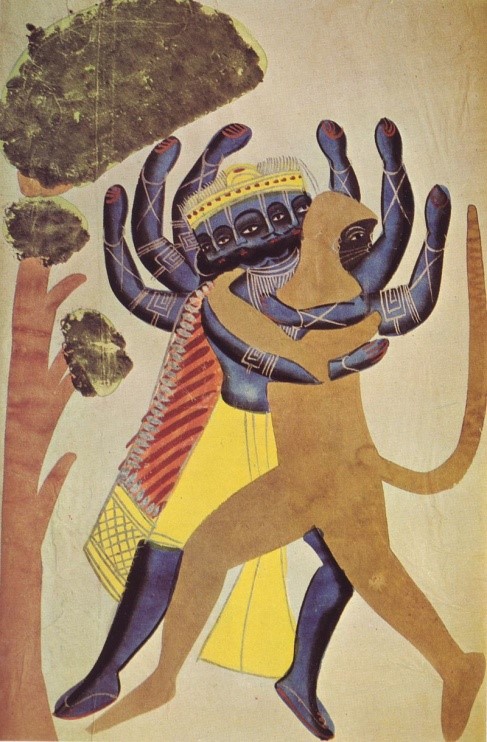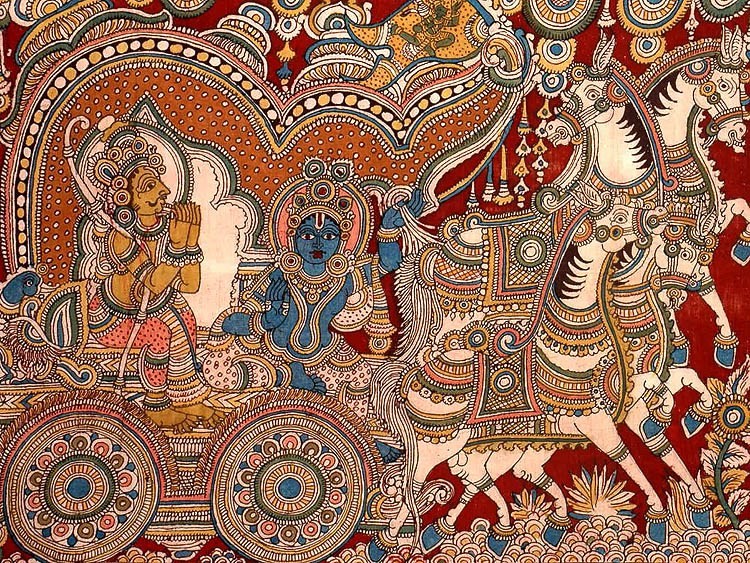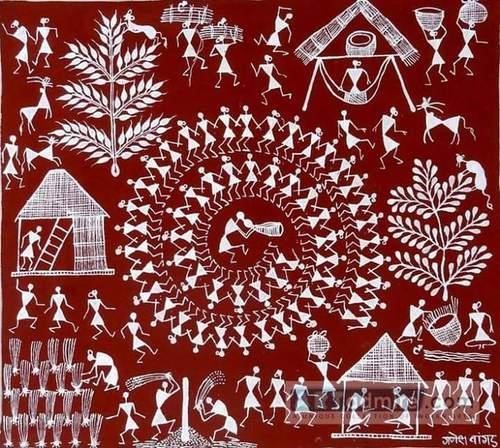Our country has always been a repository of indigenous knowledge, which has been transferred from one generation to another. Artists in each generation have created the best of works out of available material and technology. These art works are famously referred to as the Folk arts. These art forms have existed from time immemorial. In this section, we will look into some of the famous folk art work related to paintings.
Madhubani Paintings or Mithila paintings
The name of this art form is derived from Mithila, which was formerly known as Videha and is also the birthplace of Sita. It is believed that women in this region have been painting figures and designs on the walls of their mud houses for ceremonial occasions, especially weddings, for centuries. According to the locals, this art form originated when Princess Sita got married to Lord Rama.
The paintings are characterized by bright colors and are usually found in three areas of the house - the central or outer courtyards, the eastern part of the house where the Kuladevi (usually Kali) resides, and a room in the southern part of the house which contains the most significant images. The outer central courtyard features vivid portrayals of various armed gods and animals, as well as images of women engaged in activities such as carrying water pots and winnowing grain. The inner verandah, which houses the family shrine, known as the devasthana or gosain ghar, is painted with images of griha devatas and kula devatas.
In recent times, many paintings have been done on fabric, paper, pots, and other commercial purposes. However, the most exceptional and colorful paintings are found in the kohbar ghar or inner room, where magnificent representations of kohbar (a lotus with a stalk in full bloom with metaphoric and tantric connotation) along with images of gods and goddesses are painted on freshly plastered walls.
Mithila artists do not leave any empty spaces and fill them decoratively with elements from nature such as birds, flowers, animals, fish, snakes, the Sun, and the Moon. These elements often have symbolic intent, signifying love, passion, fertility, eternity, well-being, and prosperity. Women use bamboo twigs with cotton swabs, rice straw, or fiber attached to paint. In earlier times, they made colors from mineral stones and organic things like phalsa and kusum flowers, bilwa leaves, kajal, turmeric, etc.

An example of Mithila painting
Pattachitra
- Pattachitra is a form of folk painting famous in the state of Odisha.
- It involves painting on a piece of cloth and is closely related to the cult of Shri Jagannath and temple traditions in Puri.
- The art form is believed to have originated as early as the 12th century.
- Popular themes include depictions of the temple of Jagannath, Lord Krishna displaying his powers as a child, the ten incarnations of Lord Vishnu, and Lord Ganesh as a five-headed deity.
- Natural substances are used for most of the materials in this painting.
- Pattachitra is a disciplined form of art with set rules, including a floral border around the paintings and the use of natural colors.
- The paintings are executed primarily in profile with elongated eyes, and stark emotional expressions are depicted with great detail through prominent solid shades.
- Over time, the art form has evolved, with Chitrakars creating paintings on palm leaves, Tussar silk, wall hangings, and showpieces.

Pattachitra painting
Kalighat Painting
- Kalighat paintings originated in the 19th century near Kalighat Kali Temple in Calcutta, West Bengal, India.
- The paintings initially depicted Hindu gods, mythological characters, and later expanded to include depictions of everyday life and contemporary events such as crime.
- Paintings on the life of Chaitanya Mahaprabhu are also common in this form of painting.
- The artists also painted secular themes and personalities, contributing to the Independence movement, with historic characters like Rani Lakshmibai and Duldul, the famous horse of Imam Hussain of Karbala.
- Watercolors on mill paper and brushes made of calf and squirrel hair are characteristic materials of this school of painting.
- These simple paintings and drawings could easily be reproduced through lithography and influenced even modern artists like the late Jamini Roy.

An example of Kalighat painting
Kalamkari Paintings
- Kalamkari is a kind of cotton textile that is either hand-painted or block-printed, and is produced in Iran and India.
- Only natural dyes are used in Kalamkari, and the entire process involves twenty-three steps.
- A bamboo or date palm stick with fine hair attached to one end is used as a brush or pen to create design contours.
- There are two main styles of Kalamkari art in India - Srikalahasti style and Machilipatnam style.
- Kalamkari art originated in temples where it was used to create unique religious identities. It appeared on scrolls, temple hangings, chariot banners, and depicted deities and scenes from Hindu epics like Ramayana, Mahabharata, and Purana.
- Kamaladevi Chattopadhyay, the first chairperson of the All India Handicrafts Board, is credited with popularizing the art form and elevating its status.

An example of Kalamkari painting
Warli Paintings
- The Warli community resides on the west coast of Northern Maharashtra around the north Sahyadri range.
- Chowk is the most important painting created by the Warli community and is made by married women to mark special occasions.
- The Chowk painting is closely associated with the rituals of marriage, fertility, harvest, and the new season of sowing.
- The painting is dominated by the figure of mother goddess Palaghat, who represents the corn goddess, Kansari, and is worshipped as the goddess of fertility.
- Palaghat is enclosed in a small square frame decorated with 'pointed' chevrons along the outer edges that symbolize Hariyali Deva, the God of Plants.
- Scenes of everyday life, acts of hunting, fishing, farming, dancing, and mythological stories of animals surround the central motif of Palaghat.
- These paintings are traditionally made with rice flour on earth-colored walls of their homes.
- Warli paintings use a basic graphic vocabulary of a circle, a triangle, and a square, which are monosyllabic in nature.
- The circle represents the sun and the moon, while the triangle depicts mountains and conical trees.

An example of Warli painting

